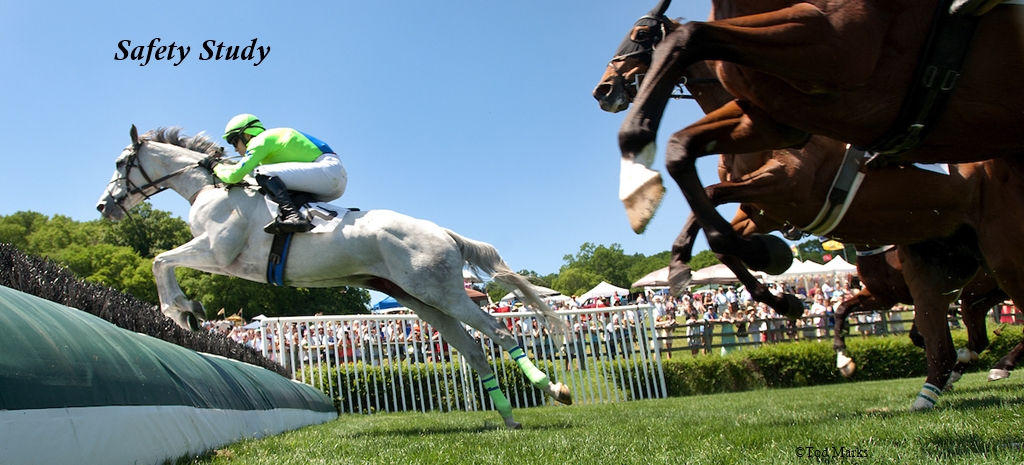Through the Temple Gwathmey Steeplechase Foundation you are helping create the beginnings of a great legacy of safety in American jump racing
Thanks to your generous financial support to the TGSF, it has been able to assist Virginia Tech’s Marion duPont Scott Equine Medical Center since 2004 with its ongoing steeplechase safety study. Without you, the TGSF would not be able to provide a yearly grant to cover the costs of the study, one that has led to improved safety conditions in steeplechasing.
Your donations are at work making it possible to collect and analyze data from each of the race meets year after year. The result has been a steady implementation of procedures that have led to a decrease in orthopedic (bone) injuries.
“The TGSF is so critical and the lynch-pin for what we are trying to do,” said Reynolds Cowles DVM, the National Steeplechase Association (NSA) Safety Task Force Chair.
Since 1997 data from all sanctioned race meets have been collected and analyzed as a result of a group of forward-thinking people who designed a long-term research study that would provide insight and the tools required to effectively monitor horses, the jockeys who ride them and the turf they train and race on. According to Dr. Cowles, safety protocols improve conditions and there is no question that the steeplechase safety study continues to have a direct correlation to those improvements. This is unprecedented but more work needs to be done and that is why your continued support is necessary. Longevity of the research and the ability to compare data over a long period of time make for a reliable study.
Throughout the racing calendar, Elaine Meilahn of the Marion duPont Scott Equine Medical Center compiles three data lists (ground conditions, temperature and occurrences) that she receives from the race meet veterinarians each week. Cross-referenced data provides a clear picture of each race day. She then files the data with the Jockey Club. At the end of the year Marion duPont Scott Equine Medical Center’s Dr. Nathaniel White does an overall statistical analysis of all of the data and writes a final report.
A subsequent data sheet captures all major complications a horse may have had from week to week. If a horse has any kind of incident such as a fall or surgery, for example, it automatically goes on the veterinarian’s list which is categorized both by horse and by trainer. That way, the vet at the next race meet can examine the horses entered with fair but informed scrutiny. Only the race meet’s veterinarian sees this information. It is not shared with the NSA, other vets, trainers or owners.
Finally, the names and identifying information are removed from all data before it is sent to the NSA Safety Committee to look at how it maps out. The Safety Committee has been able to see patterns at particular race meets by combining the data with information ascertained from each course inspection. The result has been the creation of strategies and sometimes further research to find ways to prevent safety incidents in the future.
“I believe the most important thing that the NSA safety committee has done is increased awareness by all of the necessity to improve safety for our horses and riders,” says Cowles. “There is not one measure that is responsible for this reduction, rather a combination of measures- improved pre-race exams, improved rider awareness, implementation of knee lines on jumps, improving turf conditions at most meets, elimination of inexperienced riders competing on inexperienced horses. All the above.”
Falls and fatalities have decreased in the last five years but a longer window of viewing is required to determine if the data is statistically significant.
With your financial support, the TGSF will be able to ensure a much appreciated annual grant to the Marion duPont Scott Equine Medical Center for its continued development of the safety study. A legacy of safety is in everyone’s interest.
